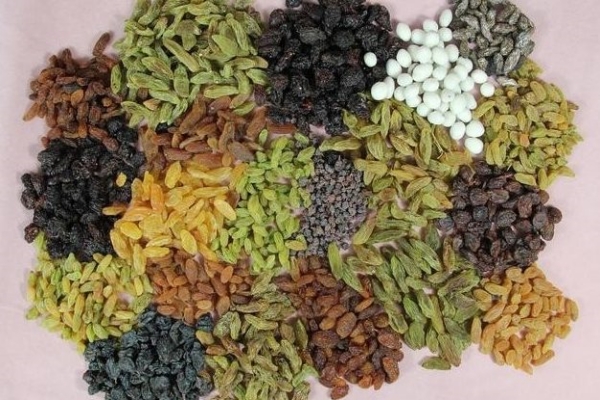Grape Drying Process
Raisins are popular healthy snacks made by drying fresh grapes. Drying grapes not only extends their shelf life but also concentrates their natural sugars, enhancing their flavor. Using a dryer not only improves drying efficiency but also excels in preserving the natural color, flavor, and nutritional content of the grapes. Advanced control systems precisely adjust drying parameters, reducing manual intervention, lowering energy consumption, and improving product quality. Compared to traditional sun drying, modern drying equipment allows for all-weather production, unaffected by weather conditions, effectively preventing contamination and ensuring the safety and cleanliness of raisins.

Grapes are evenly spread on drying trays, avoiding overlap to ensure that each grape is adequately heated. The loaded trays are then placed into the drying equipment. The drying equipment typically features a multi-layer design, enabling the processing of large quantities of grapes at once, significantly boosting production efficiency.
The key to grape drying lies in controlling temperature and time. Typically, the drying temperature for grapes is set between 50-60 degrees Celsius, which helps maintain the grapes’ natural color while preventing nutrient loss and changes in texture caused by high temperatures. The drying time varies depending on the grape variety, size, and initial moisture content, generally requiring 18-24 hours. The intelligent control system adjusts temperature and humidity in real-time according to the state of the grapes, ensuring optimal drying results.
Modern grape drying equipment uses a hot air circulation system, where hot air flows uniformly over and through the grapes, quickly evaporating moisture. The scientifically designed airflow channels and evenly distributed heat sources ensure that the grapes dry evenly, preventing over-drying or under-drying, and ensuring consistent quality of each raisin.
After drying, the raisins need to be gradually cooled to prevent the flesh from hardening or the skin from cracking due to sudden temperature changes. The cooled raisins are placed in a clean environment to cool naturally to room temperature. Once cooling is complete, the raisins are removed from the drying equipment, graded, packaged, and stored.

